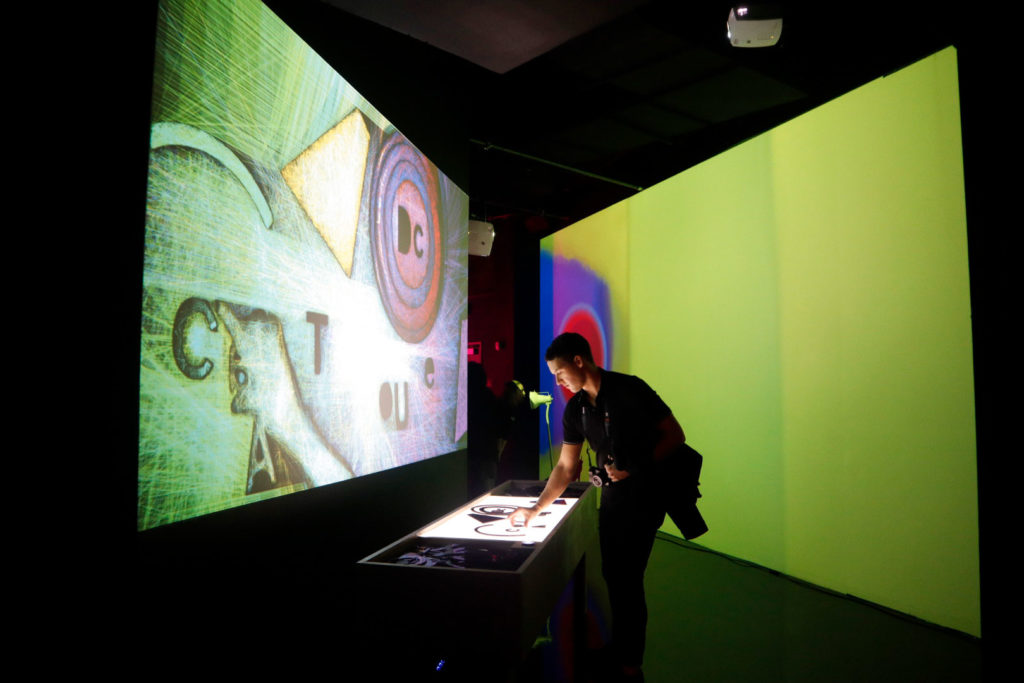A new installation at Artechouse uses computer code to transform images of the human body into an interactive design.
The “Future Sketches” exhibit, which will be on display at the Artechouse until March 1, uses elements like light, animation and facial recognition software to show visitors an expressive augmented reality. New York-based new media artist Zach Lieberman said he intends for the exhibit to illustrate what the human voice or body might look like in inanimate objects.
“Technology should always be in service of the idea,” Liberman wrote on Artechouse’s website. “The idea should be something that is poetic or that tells us about what it means to be human. When I create work, I don’t want people to point at it and say, ‘That’s dope software.’ I want them to say, ‘That’s a beautiful idea.’”
The exhibit is divided into three distinct rooms. The “Code Lab” gives visitors a look at the code behind the designs, the “Interactive Lab” allows visitors to augment their body with drawings and costumes, and the “Face Lab” allows people to virtually try on geometric masks.
Visitors can also expect to see short animations of costumes or shapes projected onto moving bodies, distorted human faces and hands and moving shapes and colors.
“I want to make artwork or create a space that makes you feel like you want to make something too,” he said. “I want to show what code feels like because this is a medium that I really love, but I think it’s not always approachable.”
Liberman said he splits his time between his art and teaching media arts at the Massachusetts Institute of Technology and the School of Poetic Computation in New York. He said that like teaching, it was rewarding to watch people interacting with the space he created.
“You don’t understand your work until you see how other people see it,” he said. “So actually putting it out there and seeing how other people, what they’re excited about, you learn about yourself as a trainer.”
Lena Galperina, the visitor experience director at Artechouse, said Lieberman was an easy choice for the company’s 15th exhibition because he combines education about code and media art to create an artistic design, following Artechouse’s goal to help visitors learn about technology through art.
Galperina cited a feature of the exhibit in which Liberman shows a video essay of designer Jessica Helfand that chronicles the history of facial recognition and phrenology – the ways in which phrenology has been racially discriminatory in determining what a “criminal” face is.
“The structure of the exhibition, whether it has labs, the sketch lab, the code lab, it invites you to learn in a very playful environment,” Galperina said. “And there are elements that he brings in that are not just playful, but he wants to create a space for greater conversation.”
The interactive labs of “Future Sketches” also include a device where visitors can talk into a microphone and see their voice turn into colorful lights on a screen. A light refraction software that reflects shapes and letters are placed on a table that people can move around, manipulating the displays on the screen.
Exhibit attendee Zoe Hawryluk said her favorite element was the “Face Lab” – a feature that allows visitors to sit down and make facial expressions on camera. The expressions are coded to match with other faces that are similar to theirs.
“When you raise your eyebrows or smile, you get like this burst of light,” she said. “And I thought that that was very beautiful to equate human emotion with so many different kinds of people.”







